Guide to Benahavis the culinary centre of the Costa del Sol, Malaga province, Andalucia, southern Spain
By Nick Nutter | Updated 29 Aug 2022 | Málaga | Villages |
Login to add to YOUR Favourites or Read Later
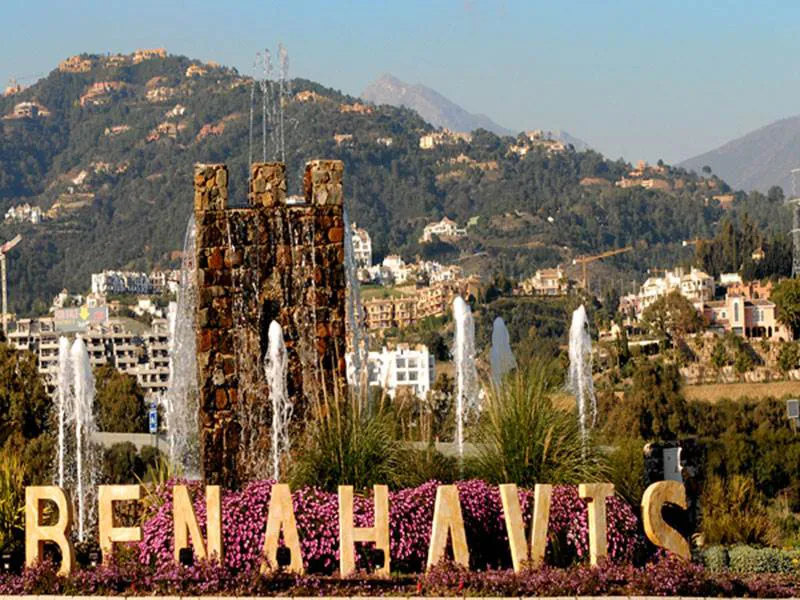
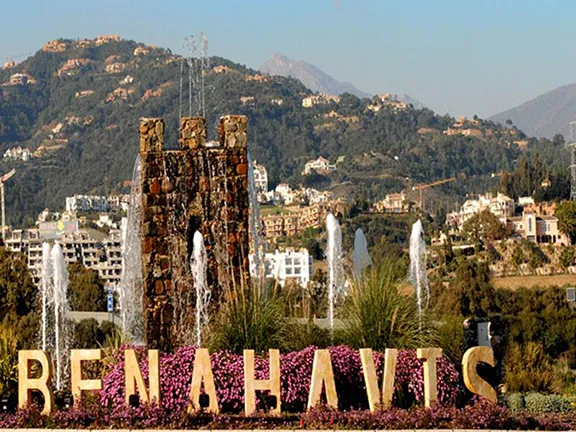
The entrance to Benahavis
To the uninitiated Benahavis, billed 'The Culinary Centre of the Costa del Sol' appears to be an ancient settlement, typical of an Andalucian village, with a history that no doubt parallels that of other similar 'white villages' like Gaucin or Cortes de la Frontera. There are, however, clues that this impression may not be correct. Why, for instance, is the place built in a valley, surrounded by hills and clearly not in a good defensible position? Why, when sat in a plaza, is one reminded more of the Italianate village of Portmeirion in North Wales, built by the eccentric Victorian entrepreneur Clough Williams-Ellis, subsequently the setting for the fantasy series 'The Prisoner' back in the 1960's?
Most people visit Benahavis, see a pretty 'white village', admire its mountainous setting, try a tapas or two or a meal in one of the many restaurants, cafes and bars, and then return to the beaches of the Costa del Sol only a few kilometres away unaware of the story behind the village, its raison d'etre. They would be surprised to learn that most of the buildings they have seen date back no further than the 20th century and its long reputation as a culinary centre to around 1975.
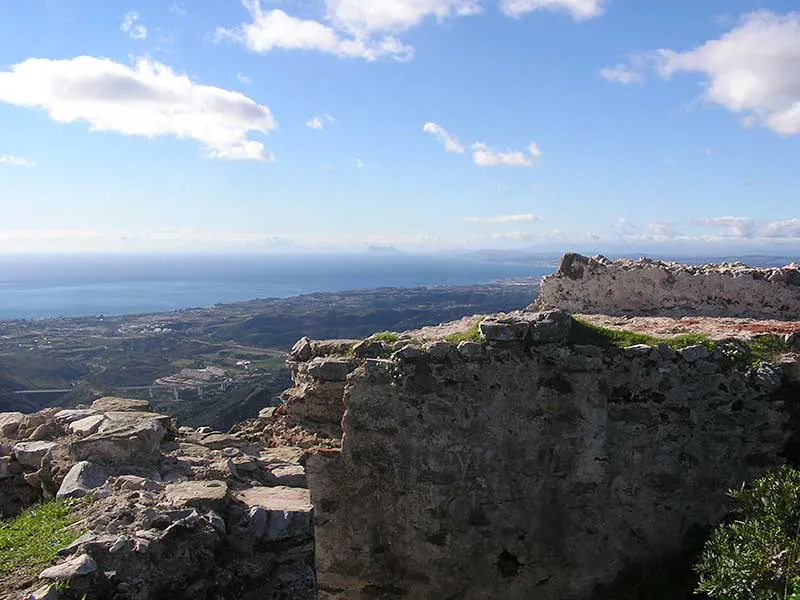
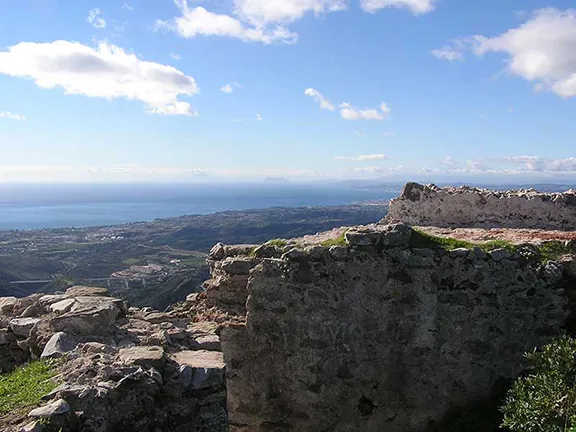
The castle of Montemayor
The real story of Benahavis starts with the castle of Montemayor. Situated about four kilometres away and out of sight of the village, this castle was built in the 11th century as part of the defensive structures constructed to protect the Nazarine kingdom of Granada during the Moorish rebellions. It was an impressive structure and no doubt contributed to the continued occupation of the area by the Moors until 1485. Although it is seven kilometres from the sea the castle commands a view of over 100 kilometres of coastline as far south as North Africa. For hundreds of years there were rumours of secret passageways linking the castle to the sea. They proved correct. In 1960 a lorry travelling along the N340 (the A7 now) dropped into a hole. Not an unusual occurrence, even today, but this hole was different. It was part of a section of passageway that was large enough to accommodate a man on horseback that ran from the foundations of Montemayor castle to the shore. A remarkable feat of engineering. Part of the castle still remains and is a good walk from the village.
One of the early rulers of the castle was called Havis. His son, an artistic soul, was enamoured with the views down in the valley of the Rio Guadalmina near the castle and he built a small settlement, and, it is rumoured, a grand house, on a south facing slope above the river. It is from this settlement that Benahavis obtained its name, Ben al Havis meaning Son of Havis.
It is not surprising, given its lack of natural defences, that during the 16th century, a period of Morisco rebellion and marauding Barbary pirates, it became necessary to build torres in the vicinity to protect the local population. There are no less than four still standing in the immediate vicinity of Benahavis and sites of another three within four kilometres. The most easily accesible is called Torre de Cercado. As you enter the village turn right at the roundabout with the water feature. On the left is a park. Opened in 2008 and built with EU money, the park is beautifully laid out with paths and flower beds, ponds and streams. It even has a small 'Roman theatre' complete with stage, columns and semi circular seating. Preserved within the park is the torre. At first glance it looks like a small church but the crenellated tower, now only ten metres high, was once much taller, and the low building that juts out like the body of a church was once the water storage cistern for the tower's defenders.
In the village itself, reached either from the lower road just beyond the park via a steep series of steps that take you through a sparkling series of water features and colourful fauna, or via the main street, you will come to the central plaza. It may be recognised by the beflagged Ayuntamiento building to one side. Only small, it is a perfectly kept example of a cobbled and tiled plaza with a newly washed and ironed flag of Andalucia flying next to a no less pristine flag of Spain. In fact the entire village is clean, tidy and with no sign of the grafiti that mars some places. One side of the town hall building is formed by the oldest building in the village, another 15th century watchtower. The BBC Holiday programme called Benahavis 'as close to Paradise as you can get'.
It is from here that you realise why the normally conservative BBC became, for them, enraptured with Benahavis. Narrow streets wind between the blindingly white buildings that follow the original Moorish street plan in this central part of the town that originally covered an area little more than a few hundred square metres clustered around the tower. The whiteness is relieved by pots of vivid flowers, restaurant signs and brightly coloured umbrellas shading tables that crowd the streets at every opportunity, imposing their own pedestrian only status to many thoroughfares.
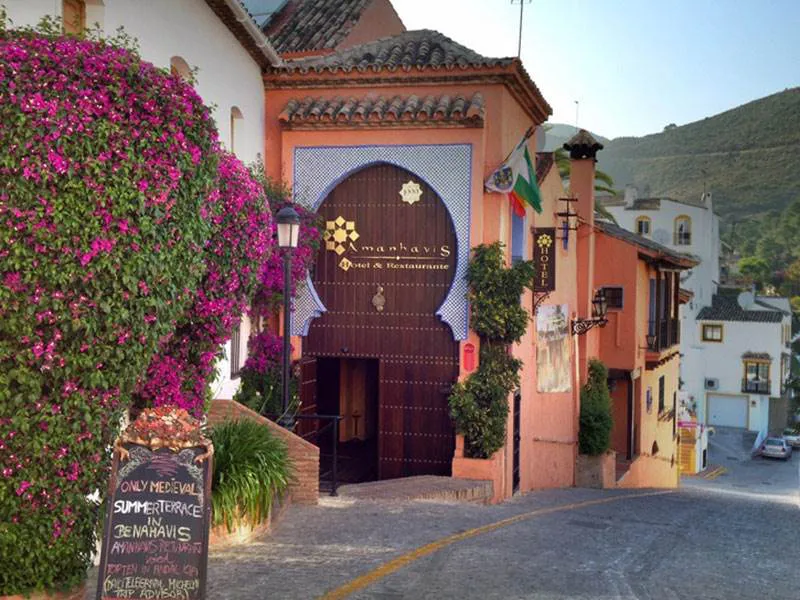
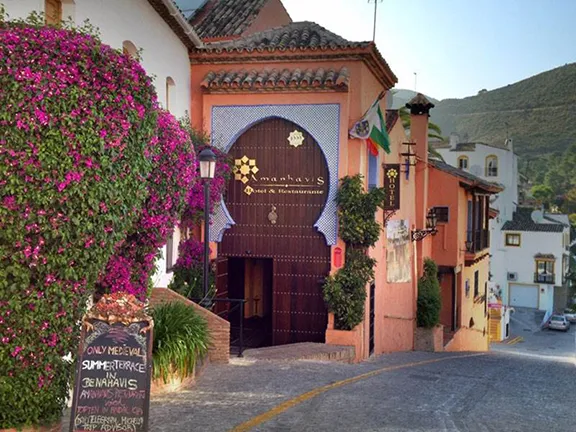
Hotel Amanhavis
Benahavis has more restaurants, at least thirty, per square kilometre than any other village in Andalucia and probably Spain. Off the central plaza you will see a huge solid wood, bronze studded door within a Moorish arch leading into a narrow entrance into what appears to be a Moorish palace. This is the entrance to the modern Hotel Amanhavis, kitsch with taste is the best way to describe it. Just inside the wood panelled, ornately decorated, soft mood lit entrance porch is a section of glassed floor beneath which is an artistic display of granite and marble amphorae, imitation Arabic swords and other modern reproduction antiques. The rooms have names like Sultan Boabdil Chamber and Christopher Columbus Berth. You get the idea but, like Benahavis itself, it all has a tangible charm, fascinating in its own way.
Outside of the old part of town little happened for four hundred years. The town's church at the entrance to the village was built in 1920. There was not much call for one before then and from its size you can see there wasn't a huge congregation when it was built. Then came the expatriate.
In the 1970's wealthy foreigners, the 'jet set' as they were known, desiring peace and tranquillity but only wanting to be a few minutes from the socialite scene of Banus, spotted Benahavis and, almost overnight, it became a desirable place to live. The local families, not slow to spot an opportunity, opened one restaurant after another to cater for them. They produced good, traditional, Spanish home cooking. Soggy vegetables, thin pork steaks and chips. The gliteratti thought it was wonderful, or at least a contrast to the swish designer restaurants on the Costa and it became fashionable to eat in Benahavis. Of such insignificant incidents is history made as Benahavis created its own strapline, 'The culinary centre of the Costa del Sol'. Since those early days the culinary skills of chefs in Benahavis has improved. If you want traditional Spanish fare cooked to perfection or a designer International dish then Benahavis is the place to go. Such is its reputation today that Benahavis now has a Culinary Arts and Hotel School and in 2014 a restaurant of the Culinary Arts School of Benahavis, 'Sabor a Malaga' opened its doors to the public.
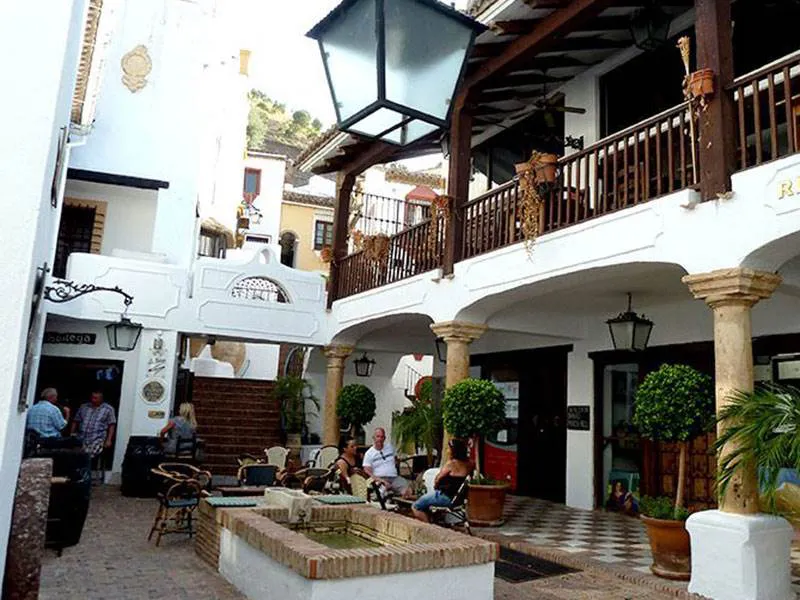
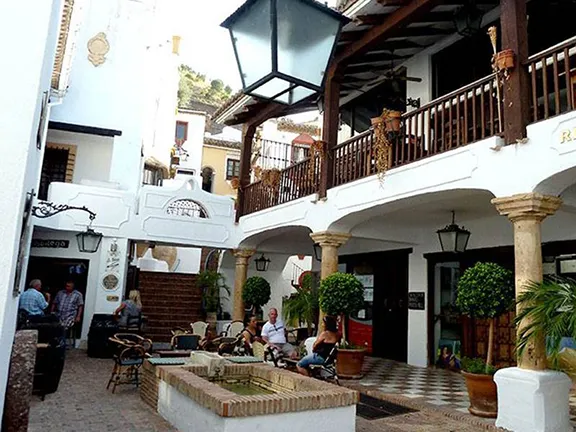
The Bodega
At the end of the main street is the gallery La Aldea. In appearance this seems to be the oldest part of the town. Deceptively it is one of the more recent. Sculptor David Marshall, like Clough Williams-Ellis, decided to build an illusion. In David's case a Moorish Andalucian village. He succeeded in spectacular style. You can sit at a rough table on an even rougher stool at the Bodega, the furniture predates the building and adds a touch of verisimilitude, sip a cold tubo of beer and be convinced you are in a really old square with its tiled fountain, narrow, walled stairs, wrought iron gated entrances and porticoed shopfronts. El Cid could ride through at any time. The gallery itself is space age in comparison.
It was partly due to Marshall's inspiration and the foresight of the mayor Antonio Mena (who sadly pased away in April 2014), that Benahavis developed in a conservative manner, no high rise here, at least not within sight of the village. Today the town hall is one of the wealthiest per inhabitant in the whole of Spain.
Children and adults will love Benahavis but would be hard pressed to say why they felt that way. It is perhaps because the place encourages you to recapture the innocence of youth. It is pretentious without being false, lively without being over boisterous and totally lacking in sophistication or worldliness. Benahavis is a romantic vision of a Spanish village.